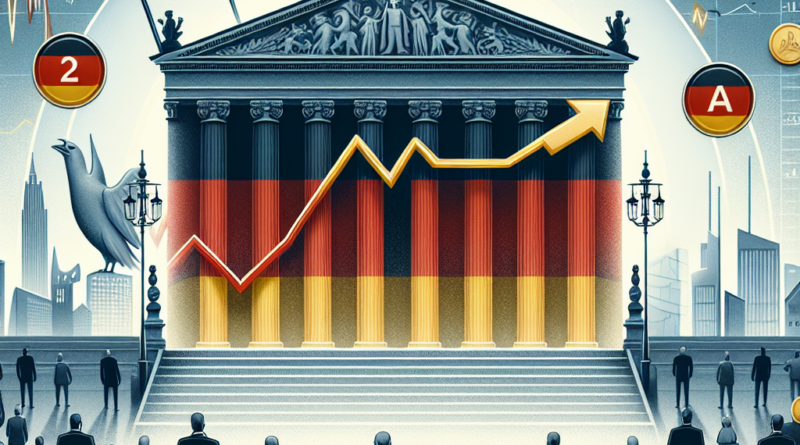Why Germany is on the Brink of Losing Its Historic AAA Rating
Germany’s Economic Outlook: A Critical Situation
Germany is facing an alarming economic crisis, projected to enter recession for the second consecutive year.
The popularity of Chancellor Olaf Scholz’s government is plummeting, particularly due to the UniCredit-Commerzbank situation.
Minister of Finance Christian Lindner recognizes the gravity of the situation and aims to leverage debt to mitigate the risks.
This decision isn’t made lightly, especially considering the German word “Schuld,” which encompasses both “debt” and “guilt.” However, it falls within the constitutional framework that allows additional borrowing during economic downturns.
Currently, the country is grappling with substantial challenges, which threaten not just its own GDP but also that of other European economies, including Italy.
According to “Der Spiegel,” Lindner plans to raise the debt ceiling for 2025 to €56.5 billion, a significant increase of €5.2 billion compared to previous estimates.
This is based on forecasts indicating a GDP contraction of approximately -0.2%.
Maintain Fiscal Discipline Amidst Rising Debt
Despite this strategy, the German government will still adhere to the “Schuldenbremse” or debt brake, a constitutional amendment restricting new debt unless in dire circumstances.
The rule, reintroduced after being suspended during the COVID-19 pandemic and the Ukraine war, will remain intact according to Lindner’s plans.
The economic outlook for Germany is bleak, with predictions indicating a decline in GDP over the next decade.
Ray Dalio, renowned founder of Bridgewater Associates, warns that Germany’s expected growth rate is a mere -0.5% annually, significantly lower than the global average.
Challenges for Future Growth
Dalio points out that Germany’s primary challenges stem from its debt levels and declining workforce strength.
Although current debt levels appear manageable—67% of GDP for government and 51% for families—the risk increases due to reliance on the euro, a currency that Germany cannot control directly.
Moreover, once financial company debts are included, Germany’s debt rises to 245% of GDP, compared to a global average of 236%.
While Germany maintains its AAA rating from major agencies, Fitch has flagged concerns regarding long-term growth potential due to ongoing structural challenges.
The Risk of Downgrade
Fitch notes that economic growth forecasts from various German institutions indicate a potential decrease in growth to a range of 0.4% to 0.7% in the coming years.
If this downward trend continues, the debt-to-GDP ratio will inevitably rise, heightening the risk of a downgrade in the country’s credit rating.
The implications for Germany’s bonds, historically regarded as a safe investment within the Eurozone, would be dire.
ING Economics has projected a rise in 10-year bond yields to 2.6% by 2025, signaling increasing borrowing costs.
Amid these economic pressures, Germany may have to reconsider its position on potential mergers affecting major banks, further complicating the fiscal landscape as it endeavors to navigate its way through this tumultuous period.




